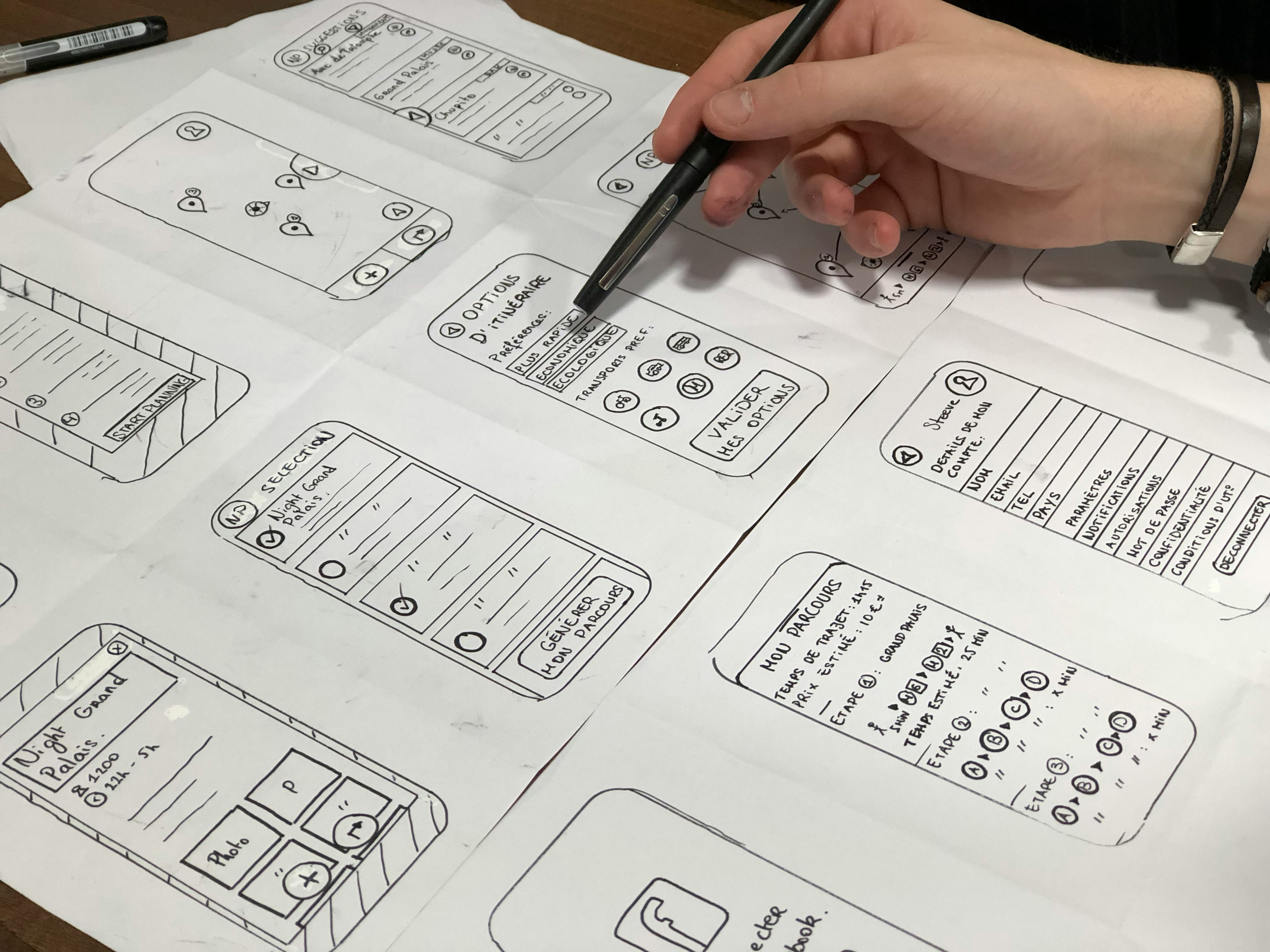Sketch


When Alex, a small business owner from Portland, first thought about branding his coffee shop, he hesitated. He imagined something minimalist, maybe a bit cheeky, perhaps with a splash of color—but he couldn’t find the words. His designer encouraged him to sketch it out. Alex drew a few loose lines on a napkin. It wasn’t art, but it sparked everything. That napkin sketch became the seed of a logo, a visual identity, and eventually, a memorable brand.
In design and branding today, a sketch isn't just a mark on paper—it’s the initial manifestation of an idea. It bridges thought and visual form. It’s here, in that unpolished first draft, that unique brand expressions begin to take shape.
What is a sketch—and why it matters
A sketch is an impulsive visual capture of an idea, a quick and honest reflection of mental imagery, recorded in seconds on paper or a tablet. It doesn’t aim to be beautiful—it aims to exist. It stands apart from polished digital mockups or interactive prototypes by serving purely as concept, unburdened by detail or perfection.
Sketches don’t shy away from imperfection; their value lies in raw creative potential. Every serious design—be it a logo, a pattern, or an app layout—begins with this free‑form, intuitive visual thinking.
Source: Google images
How sketches emerge and weave into design
Some designers never part from pencils and sketchbooks, valuing the warmth and immediacy that come from hand‑drawn lines. Inspiration may strike on a train, over lunch, or during a brainstorming session—and it’s in those fleeting moments that ideas need to be captured. Hand‑drawn sketches retain a human quality that no digital clean‑up can match.
Yet digital sketching has firmly taken root across Western markets. Tablets with styluses and apps like Procreate or Figma allow both designers and entrepreneurs to iterate rapidly. Files can be copied, scaled, shared in real time with teammates or clients—offering both spontaneity and practicality.
This journey gives rise to a practice known as sketching, not just as one‑off doodles, but as a visual thinking method. Sketching involves mentally mapping concepts into lines, symbols, and shapes. It isn’t about artistic flair; it’s a tool for clarity, applicable to logo ideation, website wireframes, brand concepts, or even presentation planning. Simplicity and legibility are more important than polish. Sketching has become a universal tool for marketers, product managers, strategists—anyone shaping conceptual visual communication.
Sketching helps filter ideas and focus attention. Above all, it lowers the barrier to starting. It feels far less intimidating to scribble a curve than to begin on a pristine digital canvas.
Still, sketches aren't one‑size‑fit‑all. A logo sketch explores shape, balance, and association. When developing brand identity, sketching surfaces patterns, type explorations, or color play. For packaging, it’s about layout and content arrangement. In UI/UX, it’s about block structure and interaction flow.
Source: UX Planet
Source: Mamchenkov.net
You can read more about the difference between sketches, wireframes and mockups here.
Why sketching is the heartbeat of creative work
Deprived of its sketching phase, design becomes rigid. Sketching is rapid ideation—dozens of directions considered before anything is finalized. This prevents wasting time and money in the early stages, especially when testing hypotheses.
Sketches foster collaboration. Sharing rough ideas invites judgment and iteration and creates an inclusive dialogue with clients. It shifts design from presenting “finished product” to opening a collaborative path.
They also develop creative muscles. The more you sketch, the more your visual intuition sharpens. Ideas take form faster; originality flows more freely.
Moreover, sketches fix creative ownership. In markets like the U.S. and EU, intellectual property is tied to creation date. A signed napkin or timestamped digital sketch can legally establish authorship—essential in disputes over branding rights. Version‑control systems and timestamped cloud artboards support this process and offer both legal and project‑management benefits.
How AI is reshaping sketching
The rise of generative AI has added a new dynamic to sketching. Today, a text prompt can produce dozens of visual drafts. These AI‑generated sketches spark ideas rapidly—especially useful for entrepreneurs testing brand directions or designers overcoming creative block.
Yet AI can’t replace human content or nuance. It lacks brand context, emotional subtlety, or cultural understanding. Its “design suggestions” are raw materials that require human drawing hand, critique, and refinement.
Tools like Ironov demonstrate how neural networks can assist in crafting logos, patterns, and identity systems—yet only once a human sets direction and interprets the outcomes.
Legal dimensions: why even rough scribbles count
Under U.S. and EU intellectual property frameworks, the mere visual expression of an idea garners protection. Rough sketches, annotated concept boards, email‑dated files—these all help establish creative chronology and authorship. This is critical when working with clients without formal contracts, ensuring designers can prove original contributions.
Moreover, in multi‑stakeholder teams, sketching chronologies clarify why a design pivoted, who suggested what, and when. It’s not just about IP; it’s about accountability, transparency, and storytelling.
Bringing it home: where brands begin
When Alex finally saw his finished cafe logo on the storefront sign, he looked at that napkin sketch one more time. He kept it in his wallet—not as a keepsake, but as a symbol. That rough scribble was the germ of something real: a brand people noticed, remembered, and believed in.
Sketching is bravery made visible. It’s permission to try without judgment. It marks the space between silent idea and tangible brand. And in an age that prizes AI, automation, and speed, its freedom remains irreplaceable. After all, true originality doesn’t spring from templates—it springs from a pen on paper, a curve at a time.


